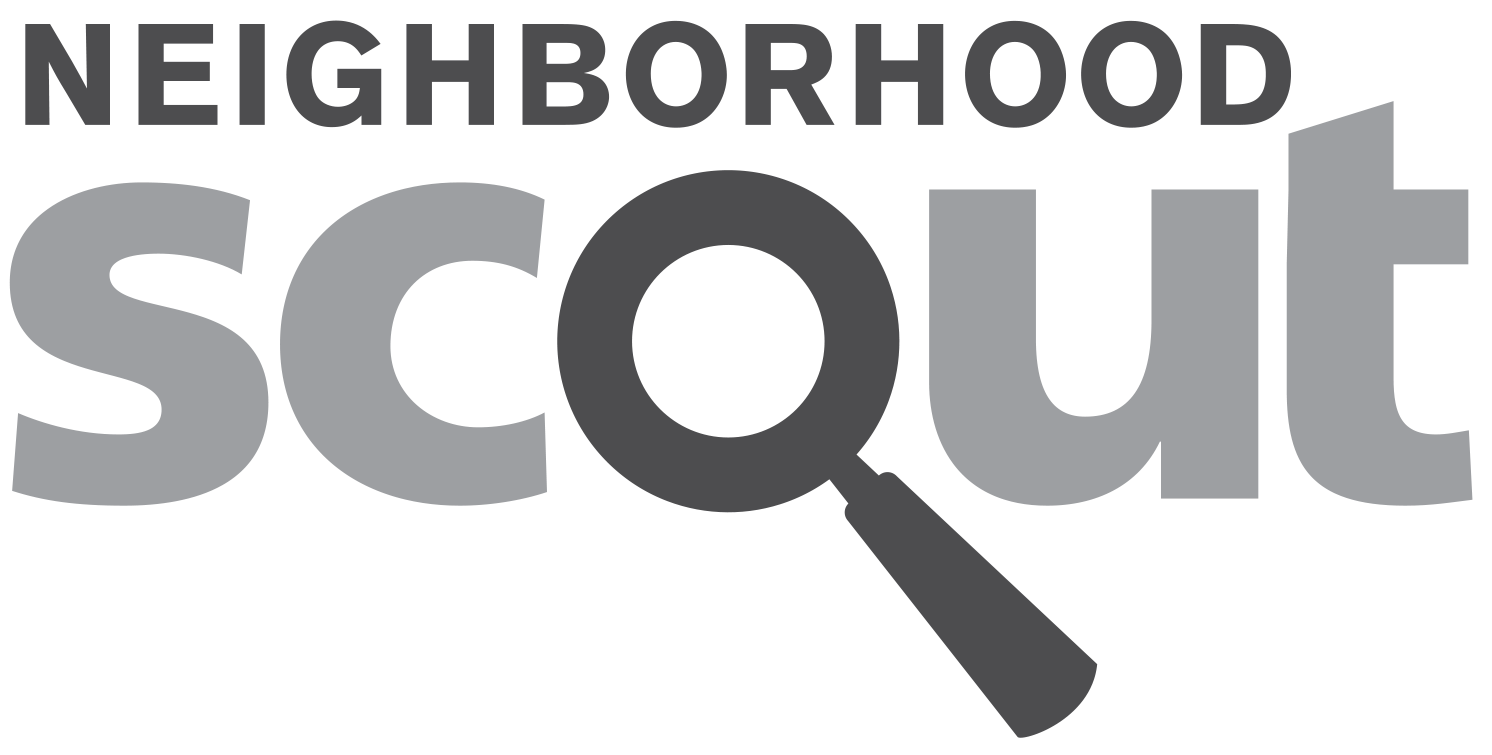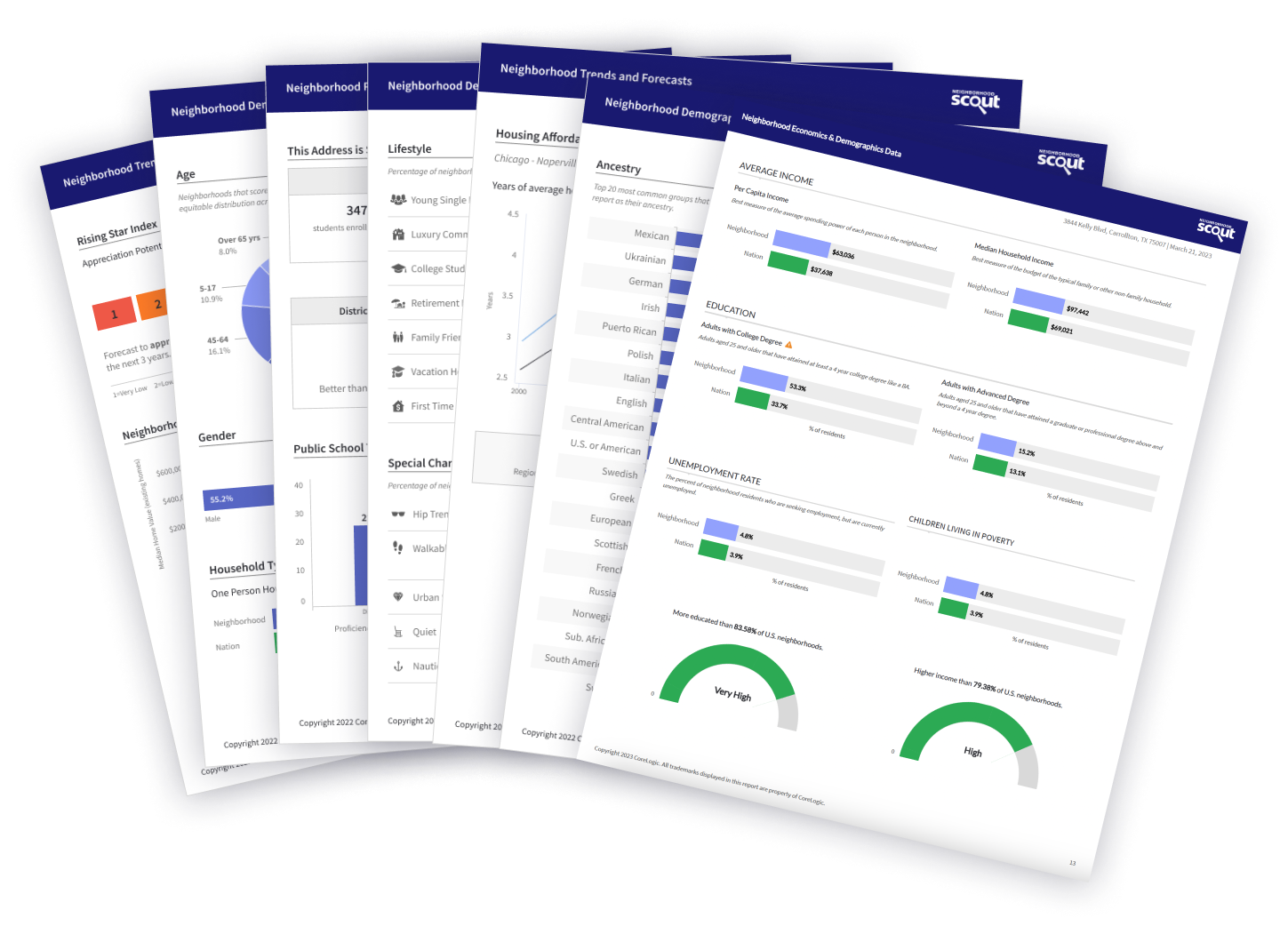Hyde Park East median real estate price is $256,381, which is less expensive than 59.5% of Illinois neighborhoods and 70.0% of all U.S. neighborhoods.
The average rental price in Hyde Park East is currently $2,102, based on NeighborhoodScout's exclusive analysis. Rents here are currently lower in price than 43.5% of Illinois neighborhoods.
Hyde Park East is a densely urban neighborhood (based on population density) located in Chicago, Illinois.
Hyde Park East real estate is primarily made up of small (studio to two bedroom) to medium sized (three or four bedroom) apartment complexes/high-rise apartments and single-family homes. Most of the residential real estate is occupied by a mixture of owners and renters. Many of the residences in the Hyde Park East neighborhood are relatively historic, built no later than 1939, and in some cases, quite a bit earlier. A number of residences were also built between 1940 and 1969.
Home and apartment vacancy rates are 9.1% in Hyde Park East. NeighborhoodScout analysis shows that this rate is lower than 42.6% of the neighborhoods in the nation, approximately near the middle range for vacancies.
The way a neighborhood looks and feels when you walk or drive around it, from its setting, its buildings, and its flavor, can make all the difference. This neighborhood has some really cool things about the way it looks and feels as revealed by NeighborhoodScout's exclusive research. This might include anything from the housing stock to the types of households living here to how people get around.
One of the most interesting things about the Hyde Park East neighborhood is that it has a greater concentration of residents who live alone than most all neighborhoods in America. With 65.8% of the households here made up of people living alone, NeighborhoodScout's research reveals that this is a larger proportion of people living alone than in 99.5% of the neighborhoods in America.
In addition, some neighborhoods have residents that are more educated than others. But in this neighborhood there is a dramatic difference. NeighborhoodScout's exclusive analysis reveals that 48.5% of the adults here have earned a Masters degree, medical degree, Ph.D. or law degree. This is a higher rate of people with a graduate degree than is found in 99.0% of U.S. neighborhoods, where the average American neighborhood has 13.4% of its adults with a graduate degree. If you are highly educated, you may have much in common with many of your neighbors here.
Also, the Hyde Park East neighborhood has a greater percentage of children living in poverty (61.1%) than found in 97.1% of all U.S. neighborhoods. Children living in poverty is one of the challenges facing America, and the world, and in this neighborhood in particular, the problem can be considered acute.
Our research revealed that more commuters here take the bus to work (26.8% ride the bus) than 99.4% of all American neighborhoods. If you like the idea of leaving your car and home and hopping the bus to work, this might be a good neighborhood for you to consider.
Also, if your dream is to be able to ride your bike to work each day, look no further than this unique neighborhood. With 4.8% of residents in the Hyde Park East neighborhood commuting on a bicycle to and from work daily, this neighborhood has more bicycle commuters than 98.0% of all neighborhoods in the U.S., according to NeighborhoodScout's exclusive analysis.
Finally, a unique way of commuting is simply not to. And in the Hyde Park East neighborhood, analysis shows that 32.6% of the residents work from home, avoiding a commute altogether. This may not seem like a large number, but it is a higher proportion of people working from home than is found in 98.0% of the neighborhoods in the United States. One thing NeighborhoodScout's research reveals is that the wealthier and/or more isolated the neighborhood, the greater the proportion of residents who choose to work from home.
One of the really unique and interesting things about the look and setting of the Hyde Park East neighborhood is that it is almost entirely dominated by large apartment buildings, such as apartment complexes or high-rise apartments. 91.1% of the residential real estate here is classified as such. This puts this neighborhood on the map as having a higher proportion of large apartment buildings than 98.4% of all neighborhoods in America.
In addition, even if you drive or take transit to your place of employment, many people enjoy being able to walk in their neighborhood. What many people don't realize is that most of America's premier vacation locations are also very walkable. The Hyde Park East neighborhood is among the top 5% of American neighborhoods in terms of walkability.
Furthermore, do you watch 'This Old House' on Public Television? Do you love the idea of fixing up a Colonial or Victorian era home, complete with the charm of yesteryear? Do you like to stroll or drive streets lined with gracious older residences? If you found yourself nodding yes to any of these questions, you are going to be interested in this unique neighborhood. The Hyde Park East neighborhood stands out on a national scale for the sheer concentration of historic residences it contains: 56.9% of the residential real estate here was built from 1939 or earlier, some much earlier. This is a greater concentration of historic homes than 95.7% of the neighborhoods in the United States.
We Americans love our cars. Not only are they a necessity for most Americans due to the shape of our neighborhoods and the distances between where we live, work, shop, and go to school, but we also fancy them. As a result, most households in America have one, two, or three cars. But NeighborhoodScout's exclusive analysis shows that the Hyde Park East neighborhood has a highly unusual pattern of car ownership. 38.3% of the households in this neighborhood don't own a car at all. This is more carless households than NeighborhoodScout found in 98.0% of U.S. neighborhoods.
The Hyde Park East neighborhood has a higher proportion of its residents employed as executives, managers and professionals than 96.8% of the neighborhoods in America. In fact, 72.6% of the employed people here make a living as an executive, a manager, or other professional. With such a high concentration, this truly shapes the character of this neighborhood, and to a large degree defines what this neighborhood is about.
Did you know that the Hyde Park East neighborhood has more Haitian and Romanian ancestry people living in it than nearly any neighborhood in America? It's true! In fact, 11.1% of this neighborhood's residents have Haitian ancestry and 1.4% have Romanian ancestry.
Hyde Park East is also pretty special linguistically. Significantly, 4.4% of its residents five years old and above primarily speak African languages at home. While this may seem like a small percentage, it is higher than 98.3% of the neighborhoods in America.
The freedom of moving to new places versus the comfort of home. How much and how often people move not only can create diverse and worldly neighborhoods, but simultaneously it can produce a loss of intimacy with one's surroundings and a lack of connectedness to one's neighbors. NeighborhoodScout's exclusive research has identified this neighborhood as unique with regard to the transience of its populace. In the Hyde Park East neighborhood, a greater proportion of the residents living here today did not live here five years ago than is found in 97.0% of U.S. Neighborhoods. This neighborhood, more than almost any other in America, has new residents from other areas.
There are two complementary measures for understanding the income of a neighborhood's residents: the average and the extremes. While a neighborhood may be relatively wealthy overall, it is equally important to understand the rate of people - particularly children - who are living at or below the federal poverty line, which is extremely low income. Some neighborhoods with a lower average income may actually have a lower childhood poverty rate than another with a higher average income, and this helps us understand the conditions and character of a neighborhood.
The neighbors in the Hyde Park East neighborhood in Chicago are lower-middle income, making it a below average income neighborhood. NeighborhoodScout's research shows that this neighborhood has an income lower than 76.5% of U.S. neighborhoods. With 61.1% of the children here below the federal poverty line, this neighborhood has a higher rate of childhood poverty than 97.1% of U.S. neighborhoods.
A neighborhood is far different if it is dominated by enlisted military personnel rather than people who earn their living by farming. It is also different if most of the neighbors are clerical support or managers. What is wonderful is the sheer diversity of neighborhoods, allowing you to find the type that fits your lifestyle and aspirations.
In the Hyde Park East neighborhood, 72.6% of the working population is employed in executive, management, and professional occupations. The second most important occupational group in this neighborhood is clerical, assistant, and tech support occupations, with 15.5% of the residents employed. Other residents here are employed in sales and service jobs, from major sales accounts, to working in fast food restaurants (10.2%), and 5.6% in government jobs, whether they are in local, state, or federal positions.
Languages
The languages spoken by people in this neighborhood are diverse. These are tabulated as the languages people preferentially speak when they are at home with their families. The most common language spoken in the Hyde Park East neighborhood is English, spoken by 80.8% of households. Other important languages spoken here include African languages and Spanish.
Ethnicity / Ancestry
Culture is the shared learned behavior of peoples. Undeniably, different ethnicities and ancestries have different cultural traditions, and as a result, neighborhoods with concentrations of residents of one or another ethnicities or ancestries will express those cultures. It is what makes the North End in Boston so fun to visit for the Italian restaurants, bakeries, culture, and charm, and similarly, why people enjoy visiting Chinatown in San Francisco.
In the Hyde Park East neighborhood in Chicago, IL, residents most commonly identify their ethnicity or ancestry as Asian (12.6%). There are also a number of people of Haitian ancestry (11.1%), and residents who report German roots (10.2%), and some of the residents are also of English ancestry (6.8%), along with some Irish ancestry residents (4.1%), among others. In addition, 21.1% of the residents of this neighborhood were born in another country.
Even if your neighborhood is walkable, you may still have to drive to your place of work. Some neighborhoods are located where many can get to work in just a few minutes, while others are located such that most residents have a long and arduous commute. The greatest number of commuters in Hyde Park East neighborhood spend between 15 and 30 minutes commuting one-way to work (40.9% of working residents), which is shorter than the time spent commuting to work for most Americans.
Here most residents (26.8%) ride the bus to get to work. In addition, quite a number also hop out the door and walk to work to get to work (17.1%) and 16.1% of residents also drive alone in a private automobile for their daily commute. The bus provides a valuable service in the Hyde Park East neighborhood of Chicago by getting a lot of residents to and from work daily, reducing the costs of commuting and reducing some congestion on the roads as well.

